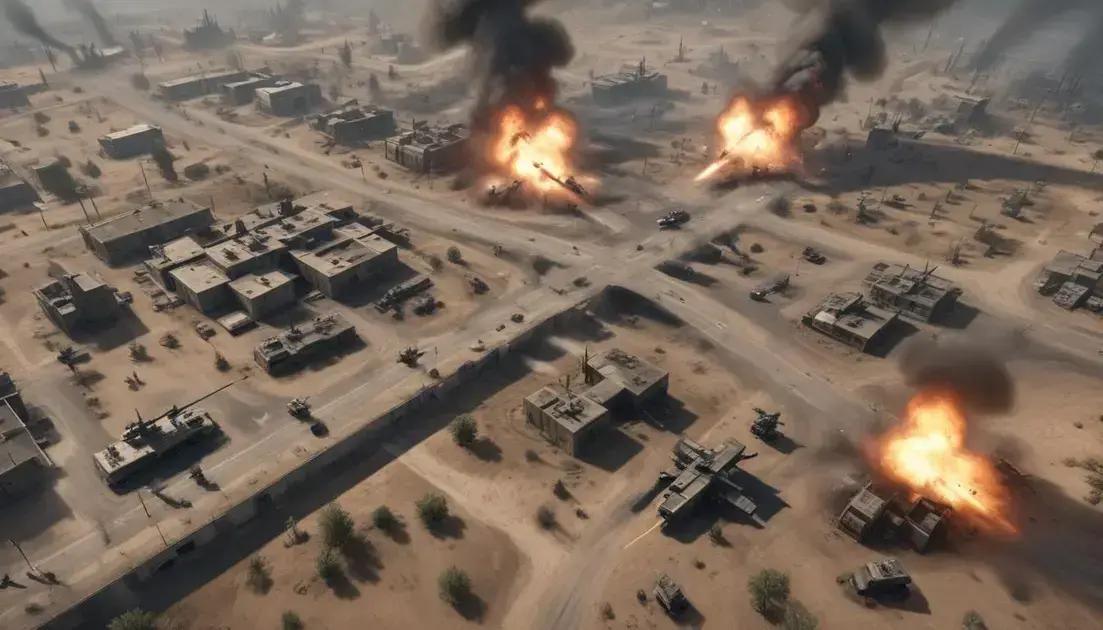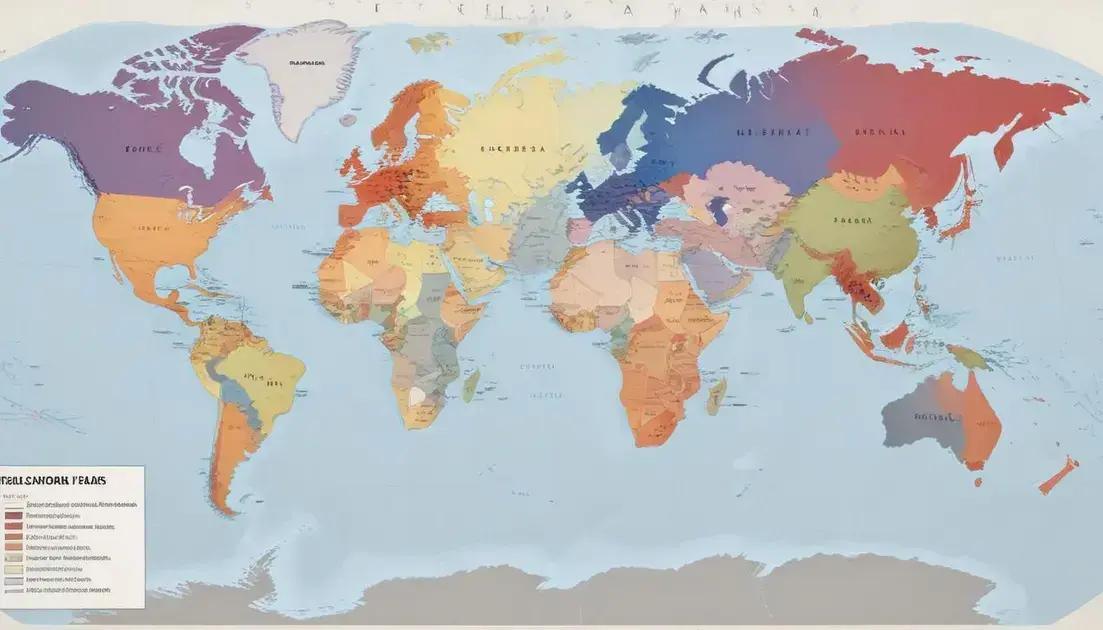
The war industry: the invisible power of the 21st century
The future of the war industry is shaped by technology, political dynamics, and emerging trends in global conflicts. Key factors include the rise of hybrid warfare, cybersecurity threats, and resource scarcity that intensify competition among nations. As alliances shift and climate change impacts stability, understanding these trends is crucial for preparing for the challenges ahead. Addressing these issues allows for a more secure and cooperative international landscape.
War Industry plays a pivotal role in shaping contemporary geopolitics and economic trends. Ever wondered how this unseen power affects our daily life? Let’s dive in!
The evolution of the war industry
The war industry has evolved dramatically over the years. From simple tools to complex systems, the way wars are fought has changed a lot. In the past, battles were fought with basic weapons, but now technology plays a huge role.
The Rise of Technology
Today, we see how technology has transformed warfare. Drones, satellites, and advanced weapons systems make a significant difference. These technologies help in gathering information and targeting enemies more accurately.
Global Arms Trade
The global arms trade has expanded as well. Countries invest billions in buying weapons and technology. This trade affects international relationships and global stability.
Emerging Trends
New trends in the war industry show a shift towards cyber warfare and unmanned combat. Nations are gearing up for battles that take place in digital spaces. This evolution raises questions about future conflicts and safety.
The Role of Governments
Governments play a big role in shaping the war industry. They create policies that guide how weapons are developed and sold. This influences how countries prepare for and respond to conflicts.
Public Perception
Public opinion toward the war industry has also changed. Many people are concerned about the ethical implications of advanced weapons. Discussions about peace and safety are more common now than ever before.
Impact of technology on modern warfare
The impact of technology on modern warfare is incredible. New tools change how battles are fought every day. From drones to smart bombs, technology makes a big difference.
Advanced Weaponry
Modern weapons are now more precise and deadly. Laser-guided bombs can hit targets with great accuracy. This helps reduce damage to nearby areas and civilian casualties.
Surveillance and Intelligence
Technology also boosts surveillance capabilities. Satellites and drones provide real-time information from above. This information lets military leaders make better decisions faster.
Cyber Warfare
Another aspect is cyber warfare. Attacking enemy systems through the internet can disrupt communication and infrastructure. This new battlefront is just as important as traditional warfare.
Communication Systems
Communication technology plays a crucial role as well. Secure channels allow soldiers to talk instantly, no matter where they are. This coordination is key to successful operations.
Training and Simulation
Technology helps with training as well. Virtual reality and simulations provide safe environments to practice. Soldiers can face many scenarios without the risk of injury.
Political dynamics in the arms trade
The political dynamics in the arms trade are complex and crucial. Different countries engage in this trade for various reasons. At times, it’s about influence; at other times, it’s about profit.
Power and Influence
Countries often use arms sales to build alliances and strengthen ties. Selling weapons can increase a nation’s power on the global stage. This leads to shifts in relationships between countries.
Economic Factors
Money plays a big role too. The arms trade is worth billions of dollars. This lucrative market affects local economies and creates jobs. However, it can also lead to corruption and inequality.
Regulations and Policies
Governments create regulations to control the arms trade. These laws aim to prevent illegal sales and ensure safety. However, enforcement can be tricky, and loopholes often exist.
Conflict and Instability
Political dynamics can create instability in regions. Selling weapons to conflict zones can extend wars and violence. This raises ethical questions about responsibility in the arms trade.
Public Perception
Public opinion affects how countries approach arms trading. Many people worry about the consequences of arms sales. Activism and advocacy can push governments to adopt stricter laws.
Future trends in global conflicts
The future trends in global conflicts are evolving rapidly. As our world changes, so do the ways nations engage in conflict. Recognizing these trends helps us understand what lies ahead.
Rise of Hybrid Warfare
One significant trend is hybrid warfare. It combines traditional battles with cyber attacks and disinformation campaigns. This approach makes it more challenging to identify the source of conflicts.
Increased Focus on Cybersecurity
With technology advancing, cybersecurity is becoming vital. Nations are investing heavily in protecting their digital infrastructure. Cyber threats can create chaos without firing a single shot.
Resource Scarcity
Resource scarcity is another trend shaping future conflicts. Water, food, and energy resources are becoming limited in some areas. Competition over these resources can lead to tensions and disputes.
Shifts in Alliances
We’re seeing shifts in global alliances as well. Countries are forming new partnerships based on their interests. These changes can lead to unexpected conflicts and collaborations.
Focus on Climate Change
Climate change is likely to intensify conflicts in the future. Natural disasters may cause mass migrations, leading to tensions between nations. Addressing climate issues is essential to prevent these conflicts.
Conclusion
In conclusion, understanding the war industry and its impact on global conflicts is crucial. Technology, political dynamics, and emerging trends all play important roles in shaping how conflicts arise and evolve. By paying attention to these factors, nations can better prepare for future challenges.
As we move forward, it’s clear that the landscape of warfare will continue to change. The rise of hybrid warfare, the importance of cybersecurity, and the effects of climate change will all influence future conflicts. Staying informed and adaptable is key for governments and communities.
Ultimately, recognizing these trends helps us understand our world better. It allows us to work towards peace, safety, and cooperation among nations. Focusing on these elements can pave the way for a more stable and hopeful future.


